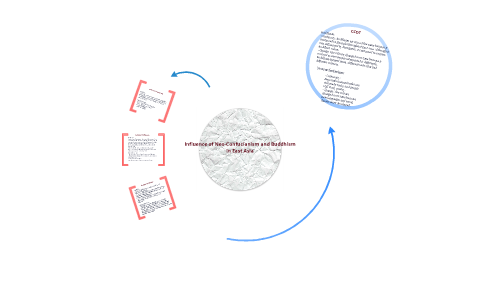Marco Polo 1254-1324 recognized this when he got to China in the late 13th century after traveling through much of Asia. Buddhism which developed in India in reaction to the established religion Hinduism and subsequently spread to other countries in South Southeast and East Asia.

Influence Of Buddhism And Neoconfucianism In East Asia By Haley Bishop
Buddhism Beyond is a series of programs exploring Buddhism its practice and its popularity in contemporary culture organized in conjunction with the exhibition Unknown Tibet.

. 841-846 Emperor Wuzongs Edict on the Suppression of. To the present day Buddhism shaped various aspects central to these Asian cultures from principles of government to visual and material culture. Korean influence on Japanese culture refers to the impact of continental Asian influences transmitted through or originating in the Korean Peninsula on Japanese institutions culture language and societySince the Korean Peninsula was the cultural bridge between Japan and China throughout much of East Asian history these influences have been detected in a variety.
From economic prostration to economic growth from political disintegration to political strength and from military rule to civilian rule. In modern times Japans popular schools of Buddhism are Pure Land Buddhism Nichiren. The determination and capabilities demonstrated during these first yearsand the.
Her remarkable political leadership. Elsewhere in East Asia Japanese philosophy began to develop as indigenous Shinto beliefs fused with Buddhism Confucianism and other schools of Chinese philosophy. Neo-Confucian Philosophy Neo-Confucianism is the name commonly applied to the revival of the various strands of Confucian philosophy and political culture that began in the middle of the 9th century and reached new levels of intellectual and social creativity in the 11th century in the Northern Song Dynasty.
Buddhism has had a major influence on the development of Japanese society and remains an influential aspect of the culture to this day. In 1000 1100 1200 and 1300 China was the most advanced place in the world. Reconstruction and consolidation 194952.
From the 6 th century BCE. The Tucci Expeditions and Buddhist Painting on view at Asia Society Museum from February 27. With her exceptional intelligence extraordinary competence in politics and inordinate ambition she ruled as the Holy and Divine Emperor of the Second Zhou Dynasty 690705 for fifteen years.
An Effective but Controversial Ruler Wu Zhao 624705 also known as Empress Wu Zetian was the first and only woman emperor of China. Reactions of Confucianists and Daoists to the influence of Buddhism during this period. In what is now Europe this was the period now referred to as the high Middle Ages which fostered the Crusades and witnessed the rise of Venice the mercantile center that.
Han Yu 768-824 Memorial on the Bone of the Buddha PDF Emperor Wuzong r. The first phase of the revival of the Confucian tradition was completed. During this initial period the CCP made great strides toward bringing the country through three critical transitions.
The Song dynasty philosopher Zhou Dunyi is seen as the first true pioneer of Neo-Confucianism using Daoist metaphysics as a framework for his ethical philosophy. Buddhism in Japan has been practiced since its official introduction in 552 CE according to the Nihon Shoki from Baekje Korea by Buddhist monks.

Pin On East Asia And Southeast Asia Culture

Disputes Between Confucian Academies And Buddhist Monasteries From A Sociocultural View The Case Of The Wufeng Academy Litigation In Confucian Academies In East Asia

0 Comments